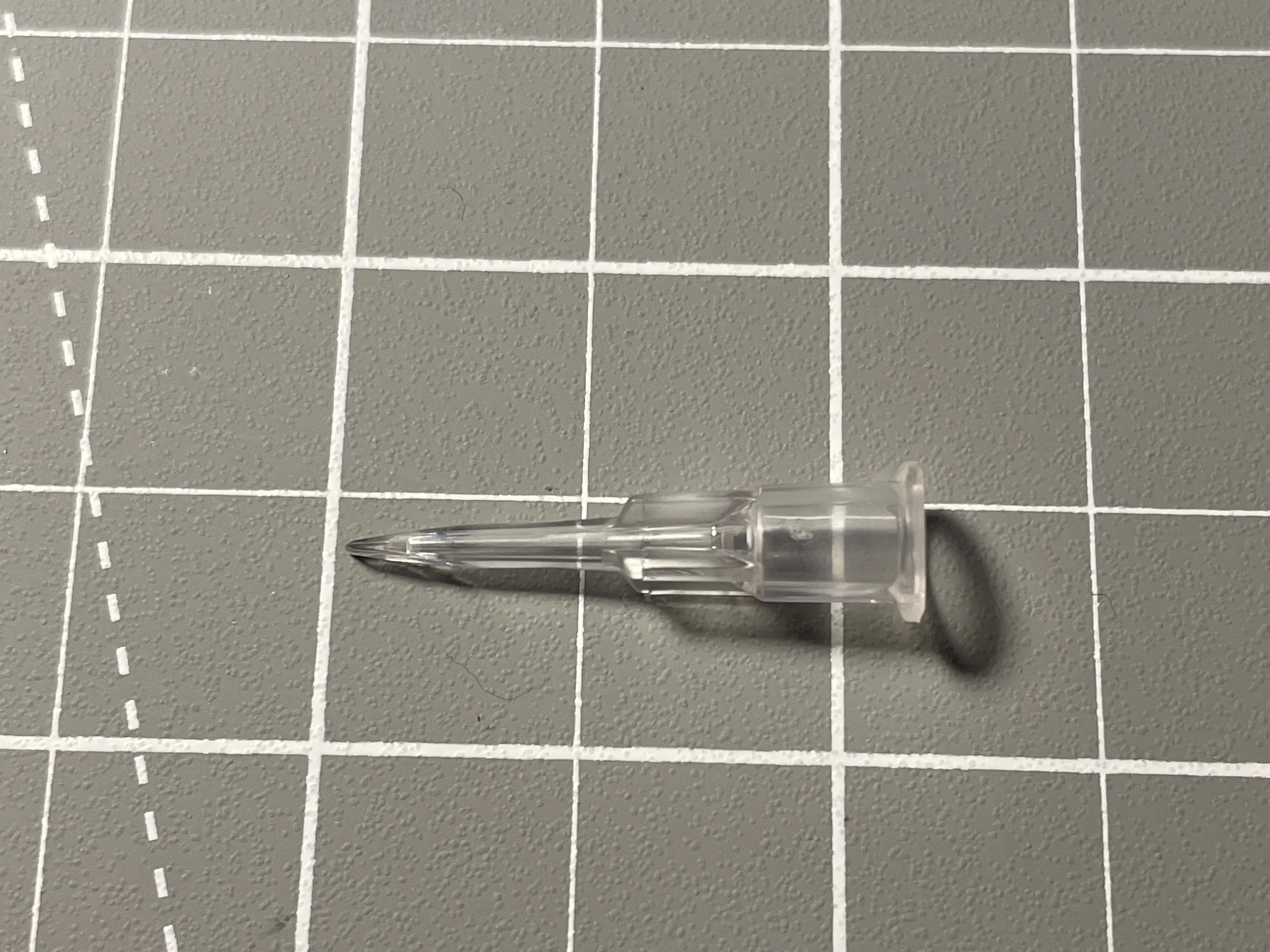Needleless Cannula Part Analysis
Cannula
A cannula is a medical device utilized to transfer fluid or medicine. The specific design analyzed here is a “needleless” cannula, meaning that healthcare workers are able to puncture tops of vials to fill a syringe without worrying about puncturing themselves with a needle. After use, the cannula is capped, removed, and disposed of in a sharp object container.
General Design Elements
Cannula Tip
The cannula itself features a traditional Luer (https://en.wikipedia.org/wiki/Luer_taper) lock style fastening system to attach to a syringe, and ribs that run lengthwise on the part allowing for interfacing/ locking with a cover. The ribs also give the user leverage to thread it on to a syringe.
While difficult to see in the picture above, the cannula has two slots on either side of its tip where it will pierce vials. The angled tip provides a sharp surface to easily pierce soft materials.
The steep angle at the tip of the cannula allows the core and cavity inserts of the mold to shut off (stop flow of plastic) between one another. Without the steep angle at the top of the cannula, an undercut would be created. This undercut would increase the cost and complexity of the injection mold tool required to produce the part.
This angle not only creates a shut off surface, but also will give the long slender core which forms the inside of the cannula rigidity upon injection. Injection pressures in injection molding can easily exceed 20,000psi, and can damage long sender mold components.
Manufacturing Method
The cannula is injection molded. It would be impractical to form these types of long slender geometries any other way.
Parting Line Location
Parting Line Location
The injection mold parting line runs along the bottom of the female Luer connection on this part. This allows the part to made in a mold with minimal moving parts, as the entire part is drafted (https://en.wikipedia.org/wiki/Draft_(engineering)) in the direction of pull of the moving half of the mold.
Gate Location
The gate on the cannula is located approximately 0.25” from the end of the cannula near the parting line. This location is a tell-tale sign that this is a tunnel gate. A tunnel gate will provide automatic degating of the part upon ejection, reducing the amount of operator input required after the injection molding process. This reduction in required input increases efficiency and profitability.
Ejection
Due to the long slender nature of the part, and the flat surface that mates with the parting plane (see photo above), it is likely that a stripper plate is utilized in the cannula’s ejection. There are no ejector pin witness lines perpendicular to the parting plane.
Material Selection
The cannula is likely made from a medical grade polycarbonate or PVC. The material is extremely hard and optically clear, so polycarbonate is the most logical material assumption.
Final Thoughts
The cannula has a simple design that allows for Luer locking attachment to a syringe, and press fitting of an injection molded cap. The cannulas gate location is designed to provide automatic degating, improving efficiency and profitability of manufacturing.
Overall, this is a well designed part and serves an important role in it’s field to help provide affordable and safe medical care.




